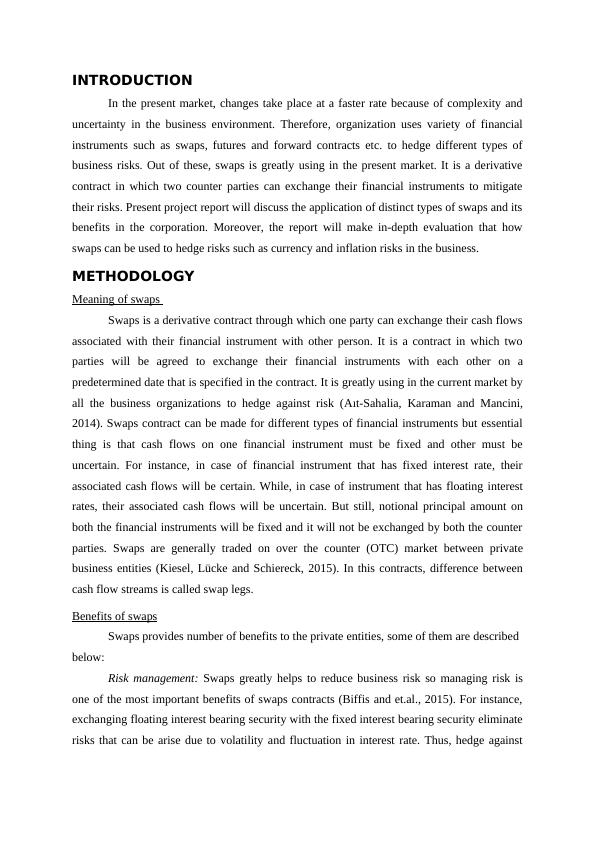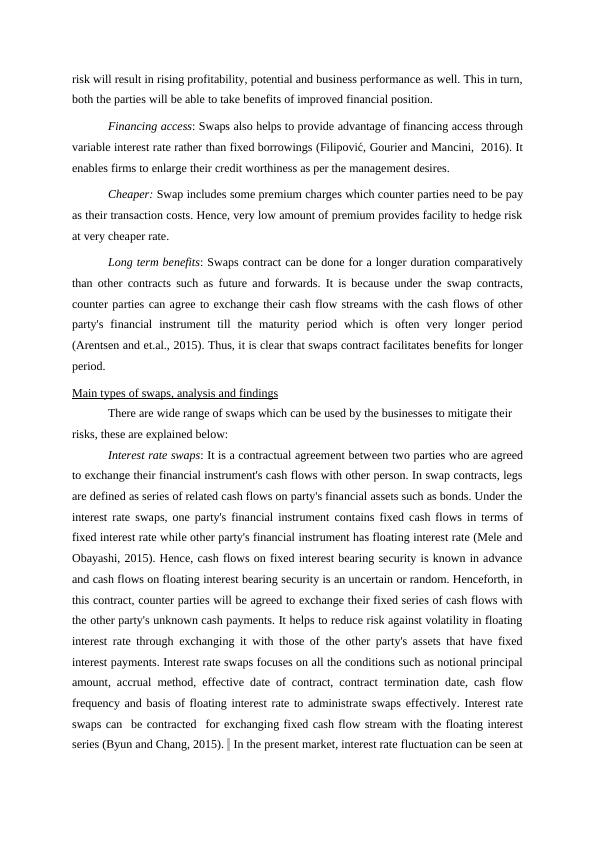Swaps: A Study of Investment Hedging with Swaps
13 Pages4200 Words261 Views
Added on 2020-01-07
About This Document
INVESTMENT ANALYSIS METHODS 3 METHODOLOGY 3 Meaning of swaps 3 Benefits of swaps3 Main types of swaps, analysis and findings4 Interest rate risk hedging with the use of swaps5 Currency risk hedging with swap7 CONCLUSION 10 RECOMMENDATIONS 11 REFERENCES 12 INTRODUCTION In the present market, changes take place at a faster rate because of complexity and uncertainty in thebusiness environment.Therefore, organization uses variety of financial instruments such as swaps, futures and forward contracts etc. Hence, under
Swaps: A Study of Investment Hedging with Swaps
Added on 2020-01-07
ShareRelated Documents
End of preview
Want to access all the pages? Upload your documents or become a member.
Assignment on Importance of Swaps Derivative Instruments
|13
|2875
|146
Derivatives: Understanding Swaps and Interest Rate Caps
|7
|1259
|117
Interest Rate Swap, Currency Swap, Credit Default Swap - Desklib
|4
|1128
|190
Assignment about Treasury and Risk Management.
|4
|483
|16
Recommendations on Derivative Instruments for Various Hedges
|3
|1153
|68
Report On Interest Rate Derivative & Their Role In Global Market
|13
|4380
|29




